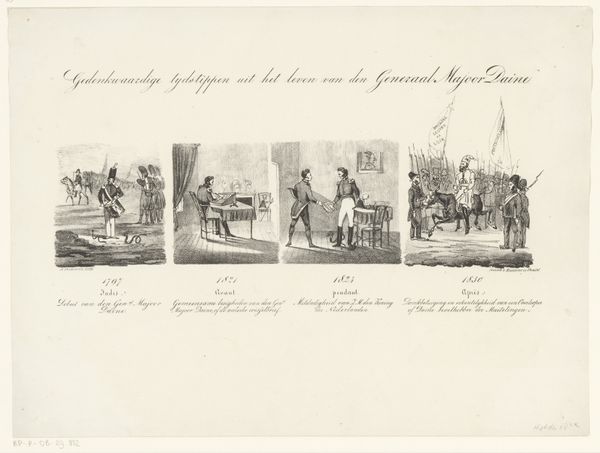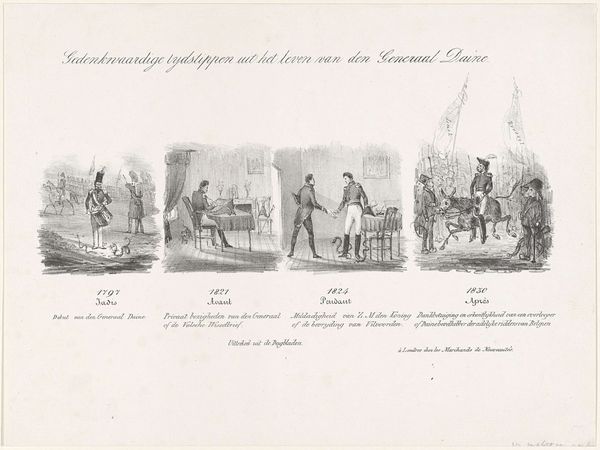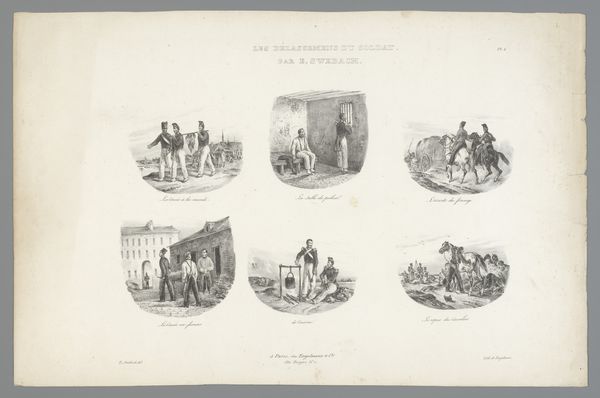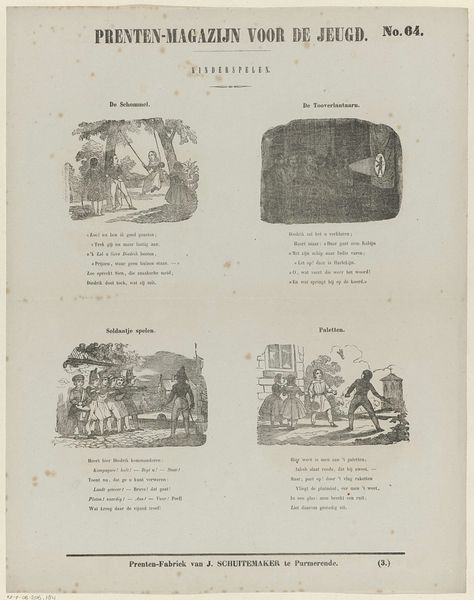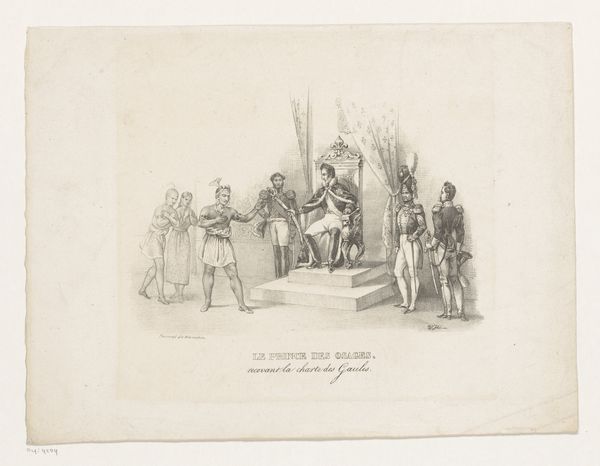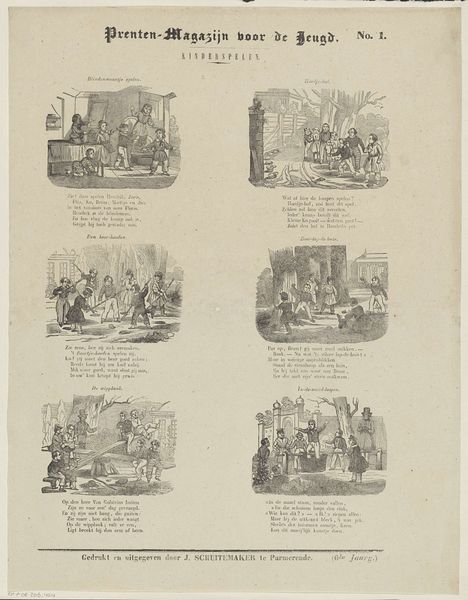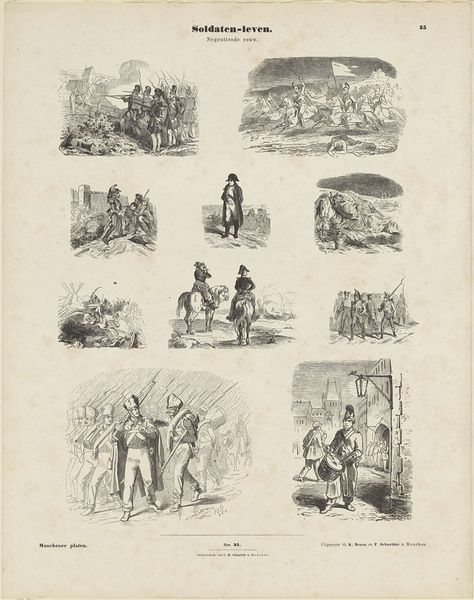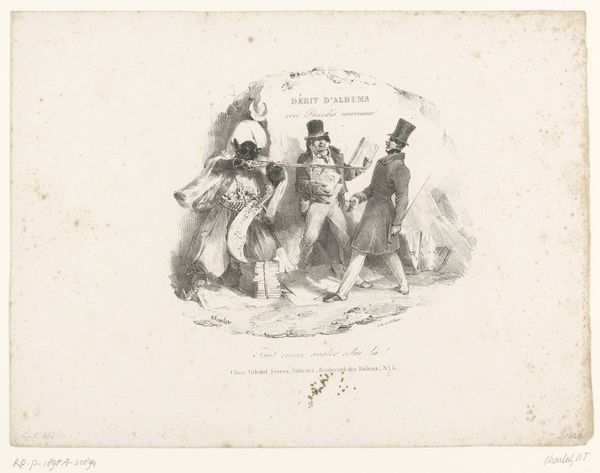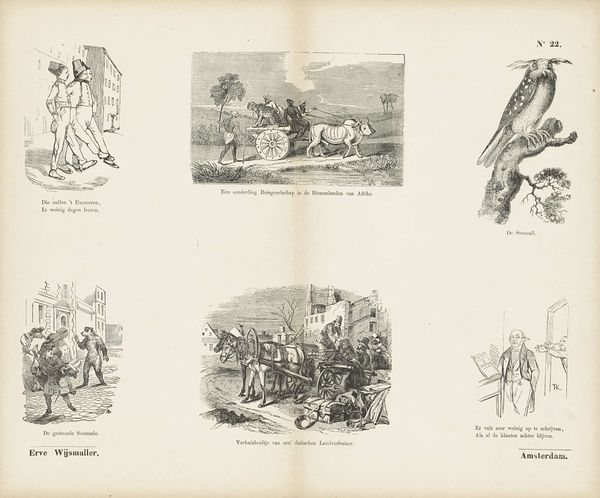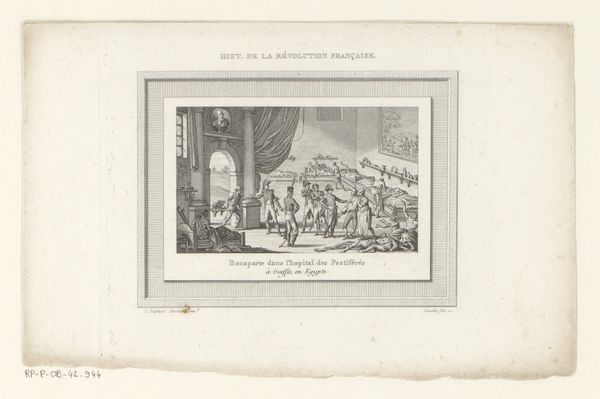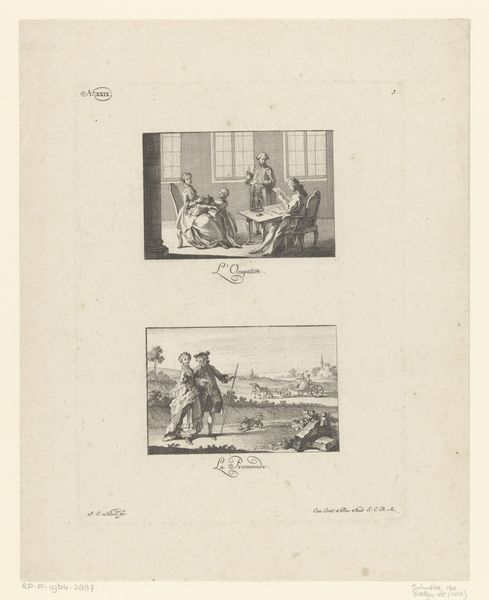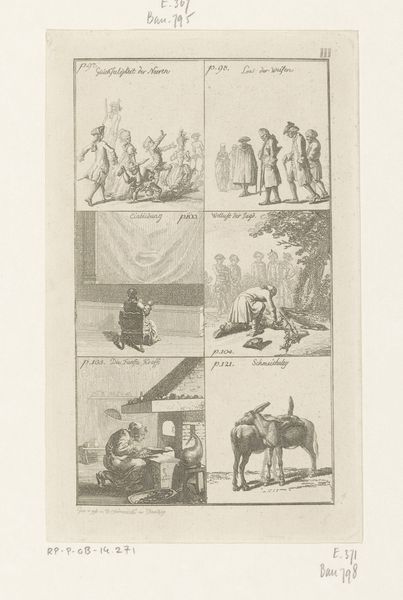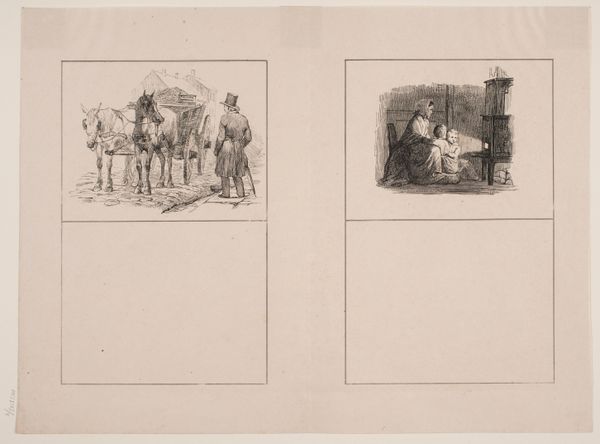
print, engraving
#
narrative-art
# print
#
caricature
#
romanticism
#
history-painting
#
academic-art
#
engraving
Dimensions: height 279 mm, width 436 mm
Copyright: Rijks Museum: Open Domain
Curator: This print, dating from 1830-1831, is entitled “Spotprent op generaal Kessels, 1830-1831” and it’s attributed to Albertus Verhoesen. It’s held at the Rijksmuseum. What's your first impression? Editor: Well, visually, it’s fascinating. It’s like a storyboard from a particularly weird dream. The linear arrangement, the monochrome palette—it all contributes to an almost unsettling mood, very matter-of-fact in its strangeness. Curator: I find it fascinating too. It seems to be offering a narrative about this General Kessels. The style blends a certain academic stiffness with the flair of Romanticism. Editor: Contextually, what was happening around 1830 that might provoke this kind of… pictorial critique? What grievances might the artist have held? Curator: The print satirizes Kessels’ role during the Belgian Revolution. Each vignette represents a specific event or rumor associated with him during that period. He's clearly portrayed unflatteringly—a figure of ridicule. Editor: Ah, so the “whale” reference isn’t random. It speaks to some perception of him as monstrous or bloated. Given the rising tide of nationalism and revolutionary fervor, what would have been the role of caricature and visual satire like this? Did it influence public perception? Curator: Undoubtedly. These kinds of prints were hugely influential in shaping public opinion. They served as accessible and immediate forms of political commentary, lampooning figures of authority. It offered people a chance to laugh, to criticize, to consolidate shared feelings in a charged atmosphere. Editor: It strikes me that we see very similar devices employed today in digital media and meme culture: accessible, instantly shareable, with a deeply rooted engagement in larger socio-political narratives. Looking at it from today's lens, that second panel particularly intrigues me - this devil figure conjuring images of soldiers with some sort of projector? Curator: The image conjured up in the projector references the perceived incompetence of Kessels during military engagements. The dream is being guided or corrupted, indicating misguided strategy. It’s worth noting the power of images to shape public opinion – both then and now. Editor: True. Thinking about that dream-projector is what I will continue mulling over long after this. The power of dreams, or visions, even staged or imposed ones, to dictate actions on a societal level. Powerful, eerie, stuff.
Comments
No comments
Be the first to comment and join the conversation on the ultimate creative platform.
